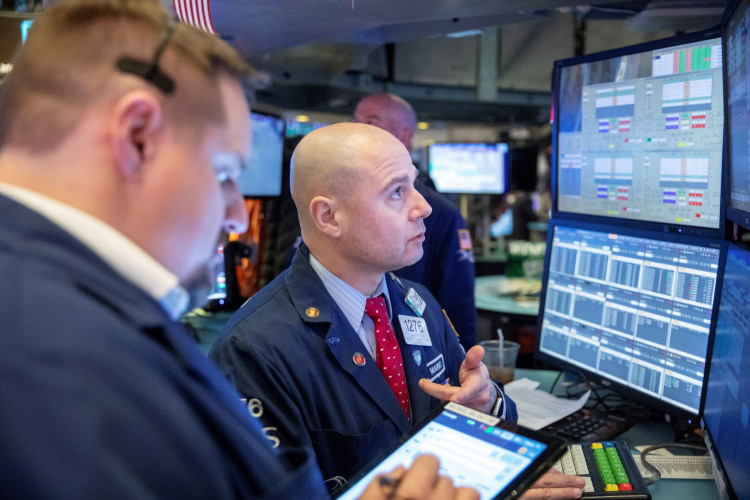Closing the first half of the year on a high note, the US stock market has made surprising gains amidst high-interest rates, signaling a comprehensive improvement in market sentiment.
This week, all three major US stock indices showed weekly, monthly, and quarterly gains, with the Nasdaq Composite Index marking its largest half-year increase in two decades, exceeding 30%. This rally was not only in tech stocks. Smaller-cap stocks had their best week since March, and industries that had lagged the benchmark index this year-from transportation to real estate and energy-outperformed the S&P 500.
The overall recovery of US stocks has been a crucial narrative in this year's bullish market scenario, fueled further this week by a series of economic reports indicating that a recession is still a distant possibility. Various types of stocks are rising, with nine out of ten S&P 500 sectors experiencing gains. The equal-weight version of this index outperformed the traditional index version by 1 percentage point, marking its best single-week performance since January.
In February, Jeff Muhlenkamp, the head of the hedge fund Muhlenkamp Fund, decreased his cash holdings from 35% to 15% and purchased stocks from a residential builder, a financial company, and a media company. Muhlenkamp indicated that while everyone was talking about the tech giants or whatever they liked about large tech firms and artificial intelligence, those weren't the only robust forces at work. Although he had anticipated a recession six months ago, the odds now appear to be less likely. Compared to three or four months ago, he mentioned their outlook on the economy was somewhat more positive.
As optimism soars, US stocks are on the path of comprehensive recovery. In the first half of this year, the tech-dominated Nasdaq 100 Index has surged nearly 40%, recovering most of the ground lost in 2022. Some of the most significant market cap stocks-particularly AI leaders-have boosted the benchmark index, resulting in a year-to-date increase of approximately 16% for the S&P 500. The Russell 2000 Index, often seen as a barometer of small-cap health, posted a more modest increase of 7.88%.
According to data compiled by Bloomberg, the Invesco S&P 500 Equal Weight ETF attracted nearly $5 billion in inflows in June, setting a record. An ETF tracking the Russell 2000 Index drew about $1.8 billion in new funds during the same period, nearing its highest level since February 2021. This wave of optimism helped the Russell 2000 Index exceed the Nasdaq in terms of monthly gains for the first time this year.
The economic surprise index also rose, with GDP, new home sales, and durable goods orders data all exceeding expectations. Since early April, with the exception of two weeks, the index has been rising, reaching its highest level in over two years.
In addition, the likelihood of a recession is diminishing. The signals sent by Federal Reserve Chairman Jerome Powell about two more interest rate hikes in 2023 sparked a surge in bond yields. However, unlike in 2022 when higher borrowing costs led to a stock market decline, these are now seen as affirming that a recession is not imminent.
Lauren Goodwin, economist and investment portfolio strategist at New York Life Investments, said that solid economic performance is fueling optimism for a comprehensive strengthening of US stock performance.
Another effect of the US economic recovery is a reduction in volatility, not just in stocks. Apart from a spike during turbulence in the banking sector in March, the US banking industry's cross-asset risk measurement has been steadily declining in 2023. John Kolovos, the Chief Technical Strategist at Macro Risk Advisors, pointed out that a decrease in implied volatility supports the bullish argument.
Analysts predict that the earnings outlook for small-cap stocks will improve later this year. Data compiled by Bloomberg shows that although the Russell 2000's revenue growth for the third quarter is expected to lag behind its larger peers, a rebound is anticipated. By mid-2024, profit growth is expected to exceed that of the S&P 500 by three times.






